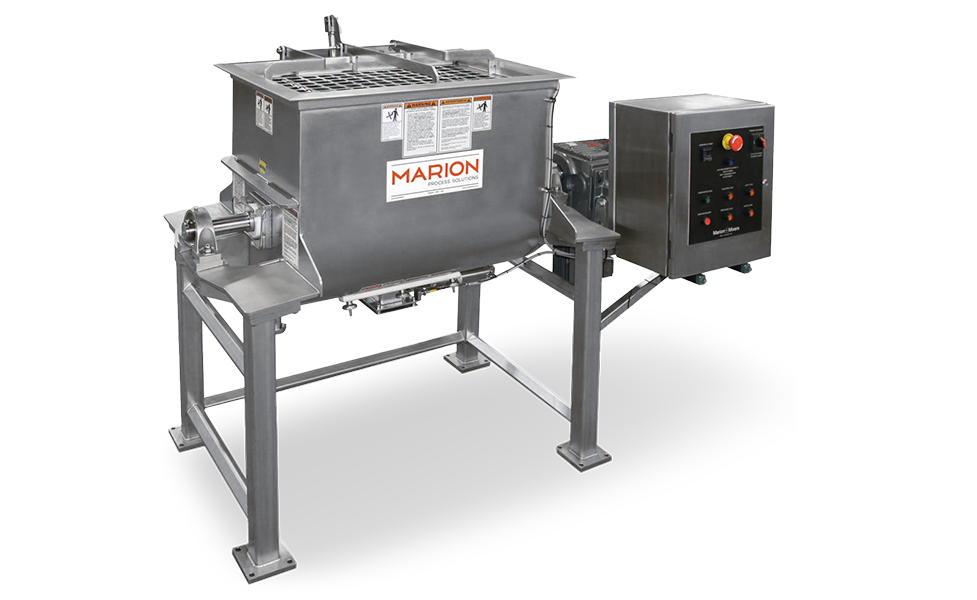-
Horizontal Fluidized Mixer
-
Horizontal Batch Mixer
-
Horizontal Continuous Mixer

In bulk powders and solids, blending and mixing systems are two of the most commonly used processes for production. But, did you know that blending and mixing are not the same? Mixing is defined as the process of thoroughly combining different materials to achieve a consistent product. Blending is the act of combining materials; although, blending usually occurs in a gentler fashion with multiple components (e.g., blending virgin plastic powder with impact modifiers, colorants, and flame retardants).
Blending and mixing systems are found in most production industries like pharmaceutical and textile production. Generally, this industries must create a consistent mixture that passes regulation.




In the powder and bulk solids industry, blending and mixing equipment can be broken down into four categories: tumbler, convective, hopper, and fluidization.
Tumbler: A tumble blender is equipped with a double-cone or V-shaped rotating vessel. Generally, tumble blenders operate at a speed of 5 to 25 rpm. By and large, diffusion is the main mechanism for mixing. Diffusion means the particles are distributed over a freshly exposed surface as the vessel rotates on a horizontal axis. Comparatively, in a V-shaped blender, the batch is continuously being split and recombined.
Convective: Convection blenders use a fixed shell with an internal rotating element (impeller) like a ribbon, paddle, or plow. Because to the action of the impeller, the particles are moved rapidly from one location to another within the bulk of the mixture.
Hopper: Hopper blenders are usually cone-in-cone to tube-type units, where particles flow under the influence of gravity in a contact-bed fashion.
Fluidization: Fluidization mixers use high flow rates of gas to fully fluidize powders in order to rapidly blend components. The gas can also be used to process (e.g., heat, cool) the blend.
Most powder and bulk solid materials can be used in blending and mixing including:
Almonds, Pecans, Tree nuts
Activated Carbon
Black Carbon
Cocoa Powder
Coffee
Corn Meal
Flour
Hemp
Grains
Milk Powder
Plastics
Rice
Salt
Starch
Sugar
Sulfur
Talc
Blending and mixing systems are one of the best investments for companies looking to reach maximum efficiency. Indeed, automating key processes in your production process can ensure your company remains competitive. When properly designed and implemented, mixing systems can help cut costs, improve productivity, and reduce human error. Advantages of blending systems include:
Lower Production Time
Increase Productivity
Retain Product Quality
Cost Saving
Less Spillage & Dust
Leakage
Better Sanitation
With over 155+ years of experience, our team has designed a number of blending/mixing systems for our clients. We maintain exclusive partnerships with top manufacturers of blending and mixing equipment including: